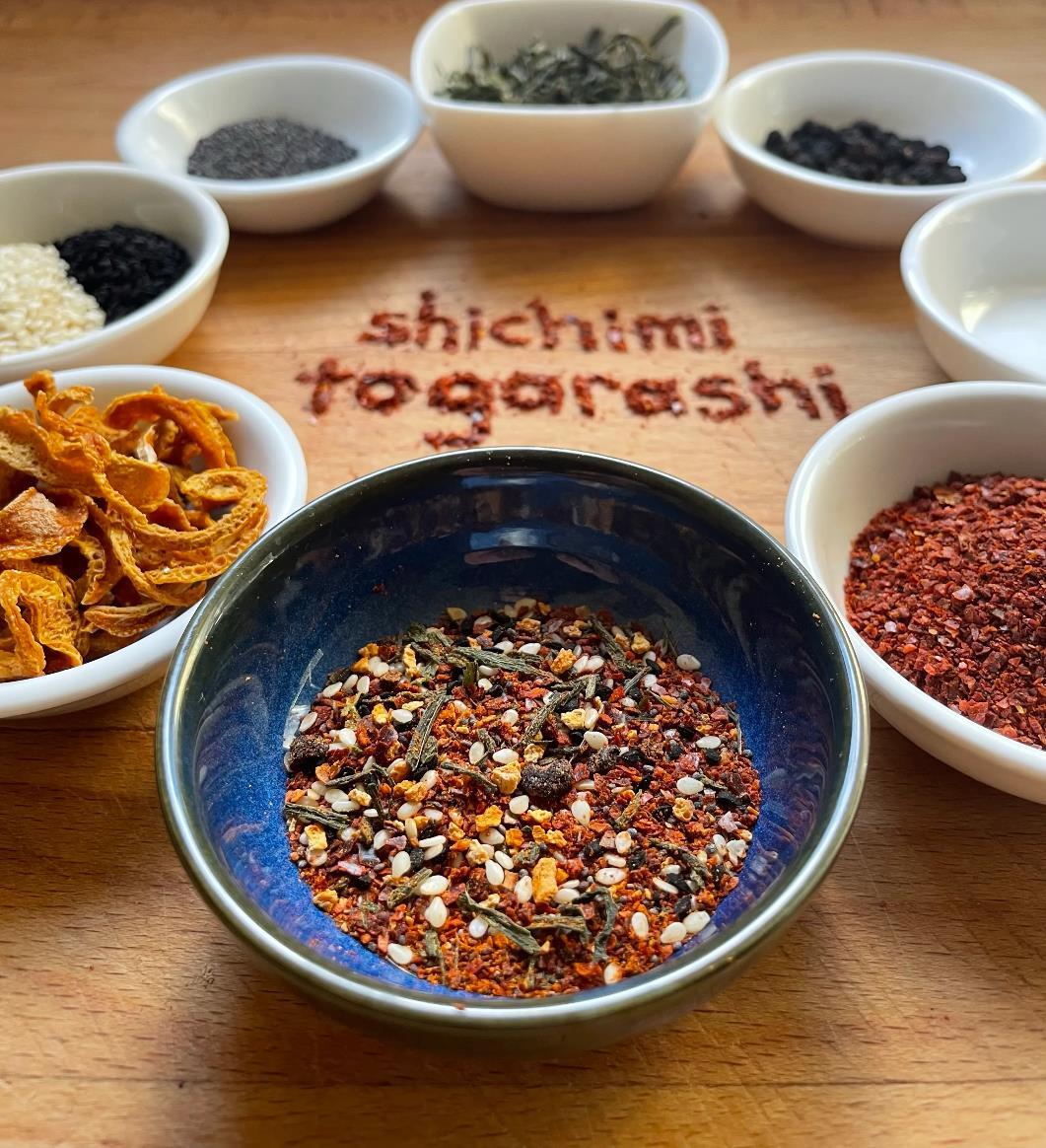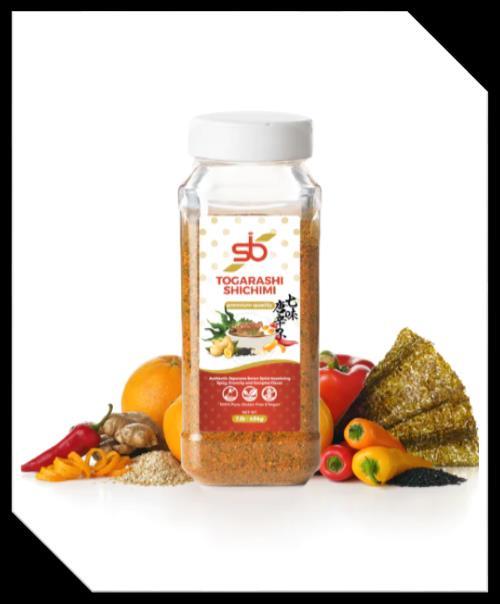The significance of the Togarashi




The Togarashi Shichimi spice is a classic combination of Japanese spices that has been used in Japanese cooking for generations. "togarashi" is a Japanese word that translates to "chili pepper," and "shichimi" is a Japanese word that meaning seven flavors. Together, these two words refer to the seven elements that go into making this spice blend. The red chili pepper, the sansho pepper, the black sesame seeds, the white seeds, the dried orange peel, the ginger, and the nori seaweed make up these seven ingredients.
Togarashi Shichimi is a spice that is believed to have been developed in Japan during the Edo period. However, the precise origins of this spice are still being researched and determined. (16031868). It was originally conceived of as a medicinal spice mix that would aid in the fight against the chilly and damp conditions that prevail throughout the winter months. The use of the Togarashi Shichimi spice as a flavoring for food rose to prominence throughout the course of time. It was included in a variety of meals, such as noodles, soups, and meats that were grilled, in order to impart flavor and fire.


The Togarashi Shichimi spice is a combination of seven different ingredients, each of which contributes a distinct flavor. These components include red chili pepper, which gives the dish a spicy kick, as well as sansho pepper, which has a flavor similar to lemon. In addition, the mixture includes black and white sesame seeds, which contribute a nutty flavor, dried orange peel, which contributes a citrusy flavor, and ginger, which contributes a subtle sweet flavor to the blend. The final step of the process is finishing the mixture with nori seaweed, which imparts a sense of umami.

The Togarashi Shichimi spice may have a number of positive effects on one's health. Capsaicin, which is found in the red chili pepper that is included in the mixture, may aid to speed up the metabolism and reduce inflammation. Ginger has been demonstrated to help reduce nausea and aid digestion, while sansho pepper has been shown to have antibacterial and antiinflammatory qualities. In addition, the dried orange peel and nori seaweed also provide their antioxidant properties to the mixture.




A wide variety of Japanese cuisines make use of the Togarashi Shichimi spice combination due to its adaptability. It is frequently utilized in broth-based dishes like ramen and udon to impart spiciness and depth of flavor. Additionally, it is utilized in the seasoning of grilled meats like Japanese yakitori and vegetables that have been tempura-battered.
Togarashi Shichimi spice can be used as a condiment for a variety of foods, including sushi, sashimi, popcorn, and potato chips.






The Togarashi Shichimi spice, which is a key component of Japanese cuisine, is added to a broad variety of foods in order to impart each of those dishes with a singular flavor profile. In order to give noodle meals like ramen and udon a spicy edge, the spice blend is frequently sprinkled over the top of them. Additionally, it is utilized in the seasoning of grilled meats like Japanese yakitori and vegetables that have been tempura-battered. Togarashi Shichimi is also frequently used as a condiment, with customers sprinkling it over their food to add flavor and heat.


A common condiment for Japanese noodle dishes such as ramen and udon, togarashi shichimi is a blend of seven different chili peppers. It is common practice to sprinkle the spice blend over the top of these foods in order to provide heat and depth of flavor. It can be used to bring harmony to the dish's flavor profile, and it works especially well with hearty broths that are full of savory ingredients. It is also possible to add the spice mixture straight to the broth as it is being cooked, which will infuse the noodles with their distinctive flavor character.


A common condiment for Japanese noodle dishes such as ramen and udon, ( Best Togarashi Shichimi Blend ) is a blend of seven different chili peppers. It is common practice to sprinkle the spice blend over the top of these foods in order to provide heat and depth of flavor. It can be used to bring harmony to the dish's flavor profile, and it works especially well with hearty broths that are full of savory ingredients. It is also possible to add the spice mixture straight to the broth as it is being cooked, which will infuse the noodles with their distinctive flavor character.





